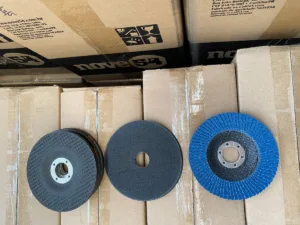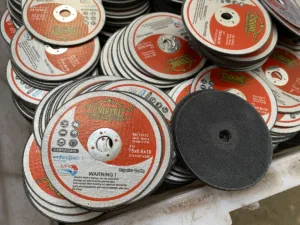Tungsten carbide, a high-performance material known for its exceptional hardness and durability, has become a staple in various industries. Whether in manufacturing, aerospace, or metalworking, tungsten carbide plays a pivotal role. However, shaping and refining this robust material require specialized tools, and one such essential tool is the grinding wheel. In this blog, we delve into the fascinating world of grinding wheels for tungsten carbide, exploring their composition, benefits, and tips for optimal usage.
Understanding Tungsten Carbide:
Before we dive into the specifics of grinding discs, it’s crucial to grasp the characteristics of tungsten carbide. Comprising tungsten and carbon, this compound exhibits remarkable hardness, wear resistance, and strength. As a result, tungsten carbide is widely used for cutting tools, dies, wear-resistant parts, and more. However, its hardness poses challenges when it comes to shaping and finishing, necessitating the use of specialized abrasive tools like grinding wheels.
Composition of Grinding Wheels for Tungsten Carbide:
Grinding wheels for tungsten carbide are meticulously designed to tackle the hardness and abrasiveness of this material. They typically consist of abrasive grains, bonding agents, and fillers, each playing a crucial role in the wheel’s performance.
- Abrasive Grains: Silicon carbide and diamond are commonly used as abrasive grains in grinding discs for tungsten carbide. Diamond, being the hardest known material, is especially effective for grinding tungsten carbide.
- Bonding Agents: Resin, vitrified, and metal are the three primary types of bonding agents used in grinding wheels. Resin-bonded wheels are suitable for lighter applications, while vitrified and metal bonds are chosen for heavy-duty grinding tasks.
- Fillers: Fillers are added to enhance the performance and durability of the grinding wheel. Common fillers include cryolite, talc, and various minerals.
Benefits of Using Grinding Wheels for Tungsten Carbide:
- Precision Grinding: The hardness of tungsten carbide demands precision, and grinding wheels excel in providing the accuracy required for shaping and finishing intricate components.
- Extended Tool Life: Properly selected grinding discs can significantly extend the lifespan of cutting tools and other tungsten carbide components, reducing the need for frequent replacements.
- Versatility: Grinding discs for tungsten carbide are versatile and can be used for various applications, including surface grinding, cylindrical grinding, and tool sharpening.
Tips for Optimal Usage:
- Choose the Right Abrasive: Selecting the appropriate abrasive material based on the specific application is crucial. Diamond abrasives are highly effective for tungsten carbide, especially in heavy-duty grinding tasks.
- Controlled Speed and Pressure: Ensure that the grinding wheel operates at the recommended speed, and apply consistent pressure to achieve the desired results without compromising the wheel’s integrity.
- Regular Dressing: Periodic dressing of the grinding wheel is essential to maintain its cutting efficiency and prevent clogging. This is particularly important when dealing with tungsten carbide, which can be abrasive and lead to wheel wear.
Conclusion:
Grinding wheels for tungsten carbide play an indispensable role in the fabrication and refinement of this remarkable material. Understanding the composition, benefits, and optimal usage of these specialized tools is crucial for achieving precision and efficiency in various industrial applications. As technology advances, we can expect continuous innovations in the realm of grinding wheels, further enhancing their capabilities and contributing to the seamless processing of tungsten carbide.



